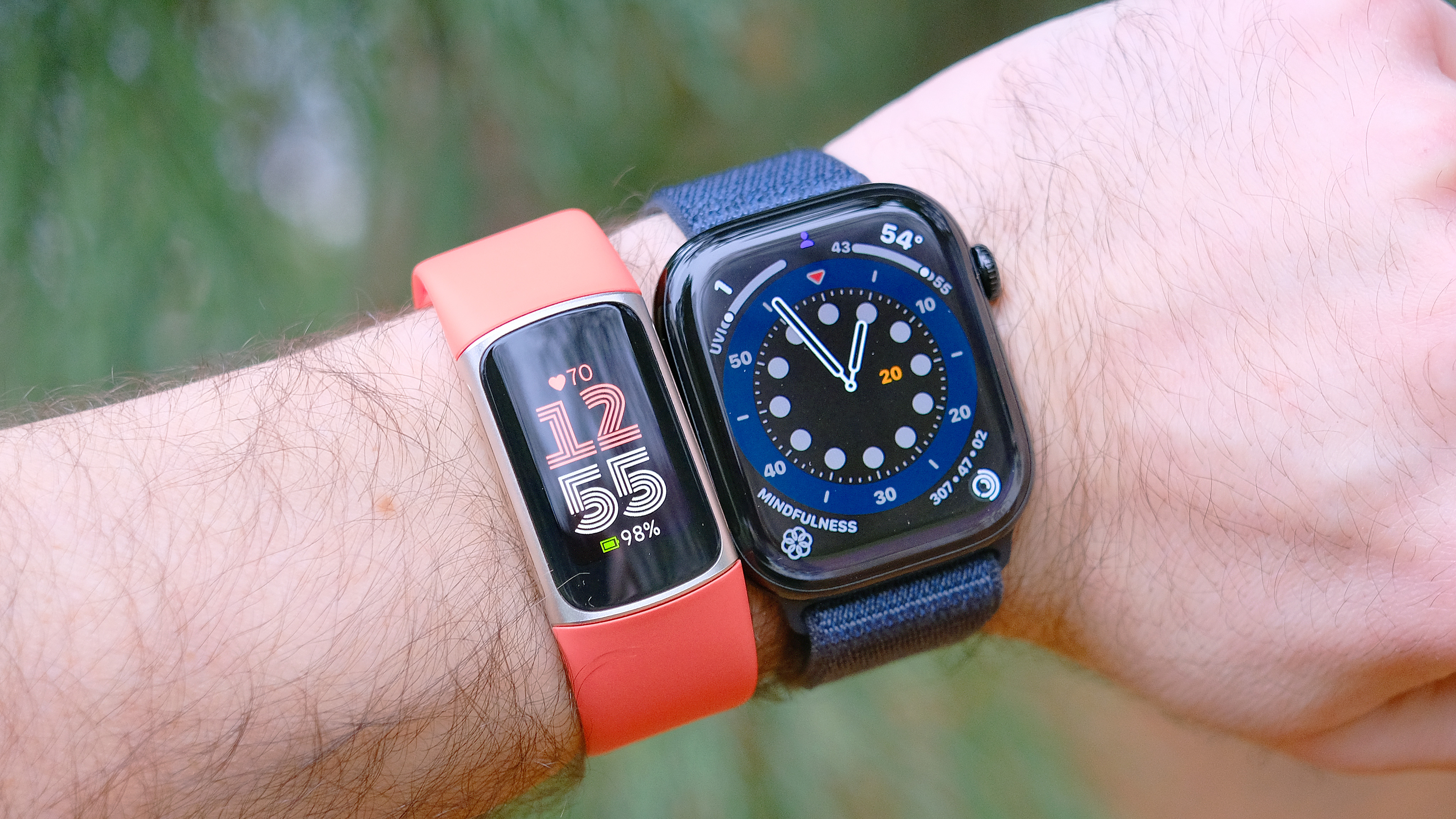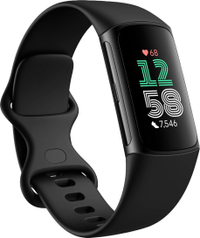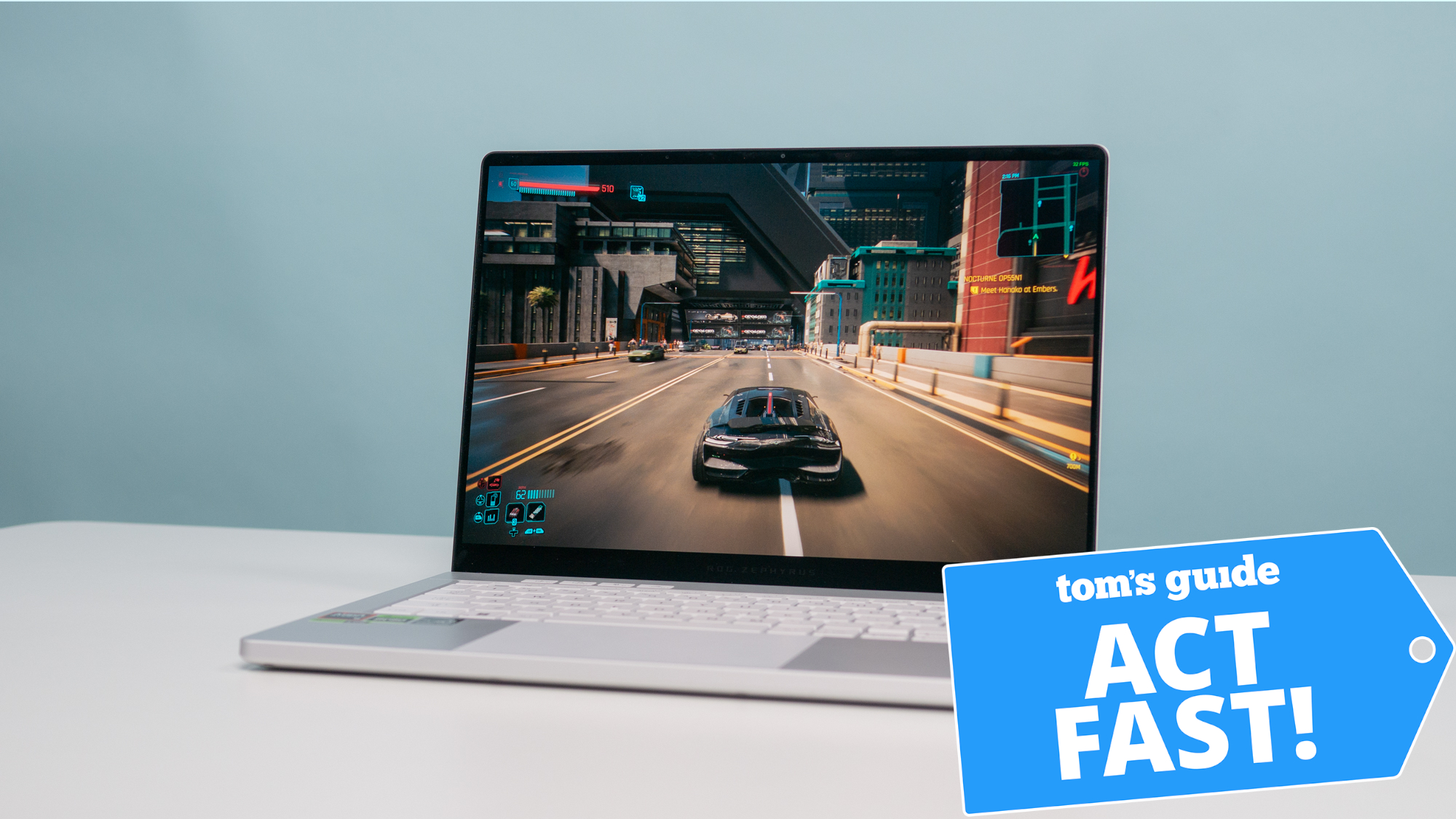I walked 5,000 steps with the Apple Watch 10 vs. Fitbit Charge 6 — this device was more accurate
And it all came down to a single step

The Apple Watch 10 and Fitbit Charge 6 are in separate leagues. The former is among the best smartwatch models money can buy and starts at $399. The latter is the best fitness tracker on the market and sells for $159.
Despite the massive price difference, either device is a great choice for tracking workouts, rest and recovery. Both sport onboard GPS — feel free to leave your phone at home — and support tracking for various sports and exercise types, including one of my favorite workouts, urban hikes (aka outdoor walks).
With similar post-workout stats including total step count, total distance, average and max heart rate, calories burned, average pace and more, I wanted to find out how the accuracy of tracking data between the two compares.
I’ve already tested the Apple Watch SE against the Charge 6 with Apple Watch narrowly claiming victory. Likewise, my colleague, Jane McGuire tested the Apple Watch 9 vs Fitbit Charge 6 with the Series 9 also taking the prize.
Can Apple's fitness tracking precision dominance continue? Read on.
Apple Watch 10 vs. Fitbit Charge 6: Walk test
The Apple Watch 10 is the best full-featured smartwatch for most people thanks to a slender, comfortable design with a bright easy-viewing screen, loads of useful smart features, safety tools and wellness tech.
The Fitbit Charge 6 is the best fitness tracker on the market today thanks to its lightweight and diminutive size, support for an enormous range of workout types, and a smattering of useful smart features like Google Wallet and Google Maps.
On an overcast Seattle afternoon, I left my apartment rocking a sporty new pair of New Balance trail sneakers, a beatup Patagonia Nano Puff and a fitness tracking wearable on either wrist (Apple Watch on the left and Fitbit on the right).
As always, I manually counted my steps as a control, clicking my trusty old-school tally counter once for every one hundred paces taken (to stay sane) before restarting my count at one. I also tracked the route using Strava on my iPhone 12 mini.
Find the results below.
Apple Watch 10 vs. Fitbit Charge 6: Walk test results
| Header Cell - Column 0 | Apple Watch 10 | Fitbit Charge 6 | Control |
|---|---|---|---|
| Total steps | 5,028 steps | 5,029 steps | 5,000 steps (manual count) |
| Total distance | 2.64 miles | 2.30 miles | 2.76 miles |
| Elevation gain | 303 feet | not provided | 324 feet (Strava) |
| Average pace | 18 mins, 37 secs per mile | 21 mins, 56 secs per mile | 16 mins, 54 secs per mile |
| Average heart rate | 133 bpm | 136 bpm | n/a |
| Max heart rate | 160 bpm | 169 bpm | n/a |
| Calories burned | 384 calories | 398 calories | n/a |
| Battery usage | 4 % | 2 % | n/a |
In my showdown of the Apple Watch Series 10 versus the Fitbit Charge 6, both devices were within 30 steps of my actual step count total. That's an impressive result. For what it's worth, Strava's count was 5,100 steps.
The Apple Watch and Fitbit each calculated a lesser total distance than Strava, with the Charge 6's count being a full quarter mile (and change) less. Annoyingly, the Fitbit Charge 6 doesn't record elevation data, a fact that slipped my mind.
Seattle is one heck of a hilly city, so whether I'm tracking an urban hike, jog or bike ride, elevation gain metrics matter quite a bit to me. After all, there's a huge difference between walking a mile on flat ground and walking a mile with 500 feet of climb.
Pace data for my walk is all over the place. Strava automatically pauses pace data when you physically stop moving, even briefly. For example, if I yield to traffic for 30 seconds while waiting to cross the street, Strava won't hold that time against my final pace.
I walked quite briskly for this test and the Fitbit's average pace data strikes me as particularly sluggish. A 22-minute mile suggests more of a saunter than an aggressive stride.
Heart rate and calorie data between the two wearables match up more nicely. Even if the Fitbit noted a slightly higher max heart rate, the averages are comfortingly similar.
Finally, the Fitbit used half the battery power the Apple Watch used to track my roughly 50-minute walk with onboard GPS.
Apple Watch 10 vs. Fitbit Charge 6: Apple Watch wins
With a total step count that's one step closer to my actual total than the challenger, the Apple Watch Series 10 continues Cupertino's dominance over Mountain View in smart wearable tracking accuracy supremacy. This is the closest walk test result we've ever had!
That said, both devices are well equipped to handle keeping tabs on your workouts, both indoor and outdoor. They're also both fantastic motivational tools for getting out and moving more.
More from Tom's Guide
Sign up to get the BEST of Tom's Guide direct to your inbox.
Get instant access to breaking news, the hottest reviews, great deals and helpful tips.

Dan Bracaglia is the Tom’s Guide editorial lead for all things smartwatches, fitness trackers and outdoor gear. With 15 years of experience as a consumer technology journalist testing everything from Oura Rings to instant cameras, Dan is deeply passionate about helping readers save money and make informed purchasing decisions. In the past year alone, Dan has assessed major product releases from the likes of Apple, Garmin, Google, Samsung, Polar and many others.
An avid outdoor adventurer, Dan is based in the U.S. Pacific Northwest where he takes advantage of the beautiful surroundings every chance he gets. A lover of kayaking, hiking, swimming, biking, snowboarding and exploring, he also makes every effort to combine his day job with his passions. When not assessing the sleep tracking and heart rate accuracy of the latest tach gadgets, you can find him photographing Seattle’s vibrant underground music community.


